Technology
Ulysses is using robots to restore seagrass populations

Seagrass punches above its weight. The marine plant only occupies 0.1% of the ocean floor but can be credited with supporting marine ecosystems of plants and fish, filtering ocean water, and capturing quite a bit of carbon. Seagrass is also being destroyed, due to climate change and other factors, with meadows reducing 7% globally each year. Ulysses Ecosystem Engineering wants to restore it.
Ulysses’ autonomous robot can be loaded with seeds and programmed to go to specific areas of the ocean floor to plant seagrass. Akhil Voorakkara, a co-founder and CEO at San Francisco-based Ulysses, told TechCrunch that the robot they’ve built has been able to speed up restoration by 100x compared to having volunteers plant the grass seeds by hand and at a fraction of the cost of other robots.
Jamie Wedderburn, now CTO, got the idea for the company while on a surf trip with friends on the West Coast of Scotland in early 2023. One of his friends mentioned a recent awful volunteering experience they had that involved planting seagrass on a particularly harsh day of Scottish weather. More than 40 volunteers painfully planted seagrass that ended up just getting wiped away by rough conditions.
Wedderburn hadn’t known about the importance of seagrass, and hearing this story sent him down a rabbit hole. He thought there must be a way to use technology to make processes like that better. Wedderburn pitched the idea to Voorakkara, who proceeded to also fall down the same rabbit hole. The company’s other two co-founders, Colm O’Brien and Will O’Brien, had similar reactions.
“I knew that would be fun immediately,” Will O’Brien told TechCrunch. “Also getting the opportunity to build a mission-driven company that works primarily in the oceans, and is really focused on nature and biodiversity, is just like, you know, it was that was extremely compelling to me as well. Growing up as a kid, my hero was Steve Irwin.”
Voorakkara said that the team decided to pursue this problem by building a robot because, while none of them had marine biology experience, they did have experience building robots. They quickly made a 3D prototype which wasn’t waterproof and leaked when they used it, but it worked well enough at injecting sesame seeds, to show them there was something there. Once they had conviction they turned to experts for help.
“None of us are marine biologists,” Voorakkara said. “You won’t get anything unless you ask and we did ask for help and advice very early on in our journey to the top people working in seagrass restoration and making sure it wasn’t crazy. These people were super excited about what we are doing and were super willing to work with us.”
Ulysses launched in early 2024 and has since earned nearly $1 million in revenue from both private companies and government organizations. The startup has partnerships with multiple government agencies in places like Florida and Australia for large-scale restoration projects too.
The startup is now emerging from stealth and announcing a $2 million pre-seed funding round led by Lowercarbon Capital with participation from VCs Superorganism and ReGen Ventures, in addition to angel investors. Voorakkara said the startup will use the funds to bolster its team of five by adding engineers and people focused on go-to-market strategies.
Timing is on Ulysses’ side, as many governments are putting more emphasis and urgency on restoring seagrass meadows. Earlier this year the European Union passed a new regulation focused on restoring different habitats by 2030 and 2050, with seagrass specifically named.
Voorakkara said that this month the company will be testing a new capability for the robot: being able to harvest seeds from approved seagrass beds and then planting those seeds where they are needed.
While seagrass is currently the company’s main focus, they think of it as the beginning. Will O’Brien said that the tech is really autonomous drones connected to a main platform so it can expand into other areas like coastal management, coastal security and other types of restoration.
“The oceans really are this frontier in humanity that is extremely under explored,” O’Brien said. “There is not a lot of novel technological solutions and it’s because it’s an extremely difficult domain, dealing with currents, [it’s] very unforgiving when you have all these things. [We want to] bring SpaceX levels of innovation to this new domain here on earth.”
There are other companies looking to build underwater robots too. Terradepth is one that has raised more than $30 million in VC to focus on mapping the ocean floor for both commercial and government goals. Eelume is another out of Norway that is focused on ocean discovery.
“In five years, we don’t want to just be doing seagrass restoration, we want to be managing hundreds of kilometers of coastline,” Voorakkara said. “We want to supercharge groups like NOAA the [United States] Coast Guard and everyone working on serving the ocean and protecting it in a much more efficient manor.”
Technology
Slick trick separates oil and water with 99.9 per cent purity


Oil and water are difficult to separate without leaving some impurities
Abaca Press/Alamy
Mixtures of oil and water can be efficiently separated by pumping them into thin channels between semipermeable membranes, paving the way to cheaper and cleaner ways to deal with industrial waste. Experimental prototypes managed to recover both oil and water with a purity greater than 99.9 per cent.
Various methods already exist to split such mixtures into component parts, including spinning them in a centrifuge, mechanically skimming oil from the surface and splitting them with chemicals, electrical charges or semipermeable membranes, which allow some substances through, but not others. Membranes are the simplest method, but are currently imperfect, leaving behind a stubborn mix of oily water or watery oil.
Now, Hao-Cheng Yang at Zhejiang University in China and his colleagues have developed a more efficient method that uses two membranes – one hydrophobic layer that allows oil to pass, and one hydrophilic layer that allows water to pass – in order to cleanly separate both.
Yang says the idea has been tried before with less-than-impressive results. This is because as oil or water is removed from the mixture, the concentration of the components changes, making the membranes less efficient.
To overcome this, the team pumped the mixture into a thin channel between the two layers. In this confined space, droplets of oil are more likely to collide and accumulate, which means they can then be removed more efficiently by the hydrophobic membrane. This, in turn, increases the ratio of water in the mixture, creating a beneficial feedback loop that ensures both clean oil and water are removed continually.
“When we put the membranes [close] together, they will affect each other, making the process continue,” says Yang. “There’s a feedback between the two processes.”
In tests, the researchers found that total oil recovery increases from just 5 per cent to 97 per cent and water recovery increases from 19 per cent to 75 per cent as the channel width is narrowed from 125 millimetres to 4 millimetres. The purity of the recovered oil and water is more than 99.9 per cent, with only small amounts of waste left, says Yang.
The team is in talks with industry and Yang believes that the process is so simple that it could easily be scaled up to suitable levels within a few years.
Topics:
Technology
This 24-inch gaming monitor is under $100 at Walmart
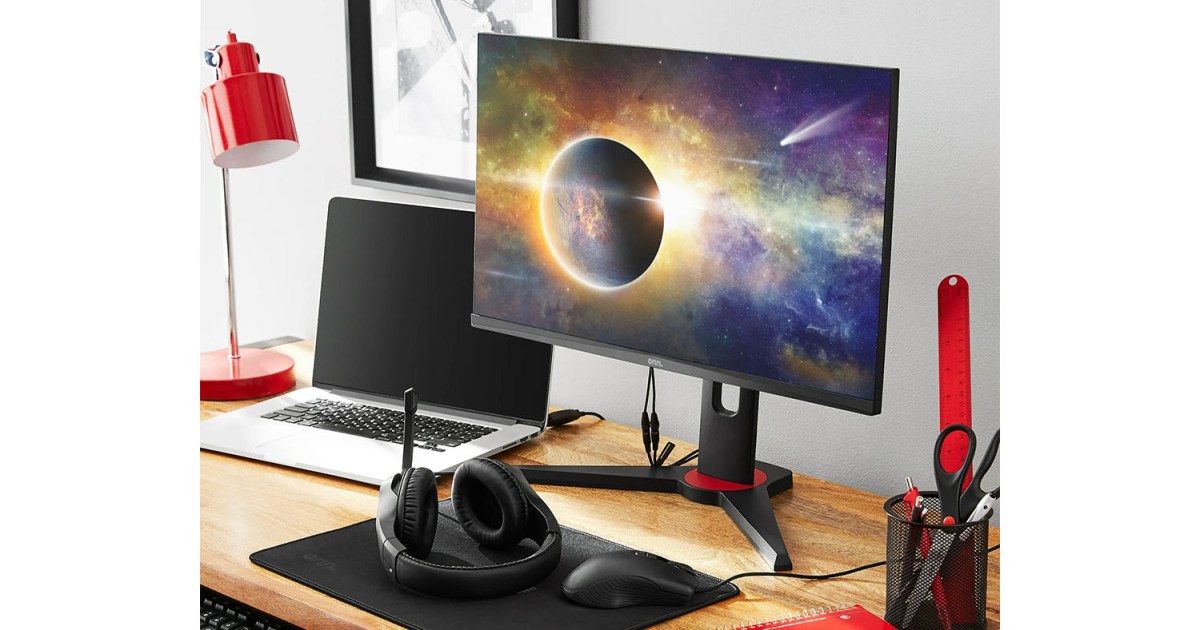

Monitor deals are rarely this inexpensive: Walmart just knocked $50 off the Onn. 24-inch FHD Gaming Monitor. Usually priced at $149, it’s down to $99, which is a steal of a deal for a gaming monitor with some great specs. If that instantly sounds appealing to you, keep reading while we take you through what the Onn. 24-inch FHD gaming monitor has to offer for the price. The deal is proving popular already, so don’t count on it sticking around for much longer.
Why you should buy the Onn. 24-inch FHD gaming monitor
While you might not think of Onn. as making some of the best monitors, you’ll be pleasantly surprised by the Onn. 24-inch FHD gaming monitor. It’s a 24-inch 1080p/full HD monitor with an impressive refresh rate of 165Hz. That means even if you’re playing action-packed games that are moving quickly, you won’t have to worry so much about motion blur as your monitor will be able to keep up with it.
Alongside that, the Onn. 24-inch FHD gaming monitor uses adaptive sync technology so it works well with your graphics card. There’s a 1ms response time so input lag won’t be a negative factor here. It also has low blue light adjustments, and you can change the height, pivot, swivel it, and tilt the monitor through the adjustable stand. One of the best gaming monitors? Maybe in this price range, given how affordable the Onn. 24-inch FHD gaming monitor is.
On the back, the Onn. 24-inch FHD gaming monitor has two HDMI ports and a DisplayPort, so you can easily hook up your PC or your console to it. Eight different gaming modes also add to the potential of the Onn. 24-inch FHD gaming monitor — tweak things just how you like them. It all comes together to make the Onn. 24-inch FHD gaming monitor surprisingly feature packed for the price.
Usually $149, the Onn. 24-inch FHD gaming monitor is down to the bargain price of $99 right now at Walmart. This is a fantastic price for a gaming monitor that has all the key tech specs you need. Check it out now by tapping the button below before the deal ends very soon.
Technology
Sony has patented a controller with a rewind feature
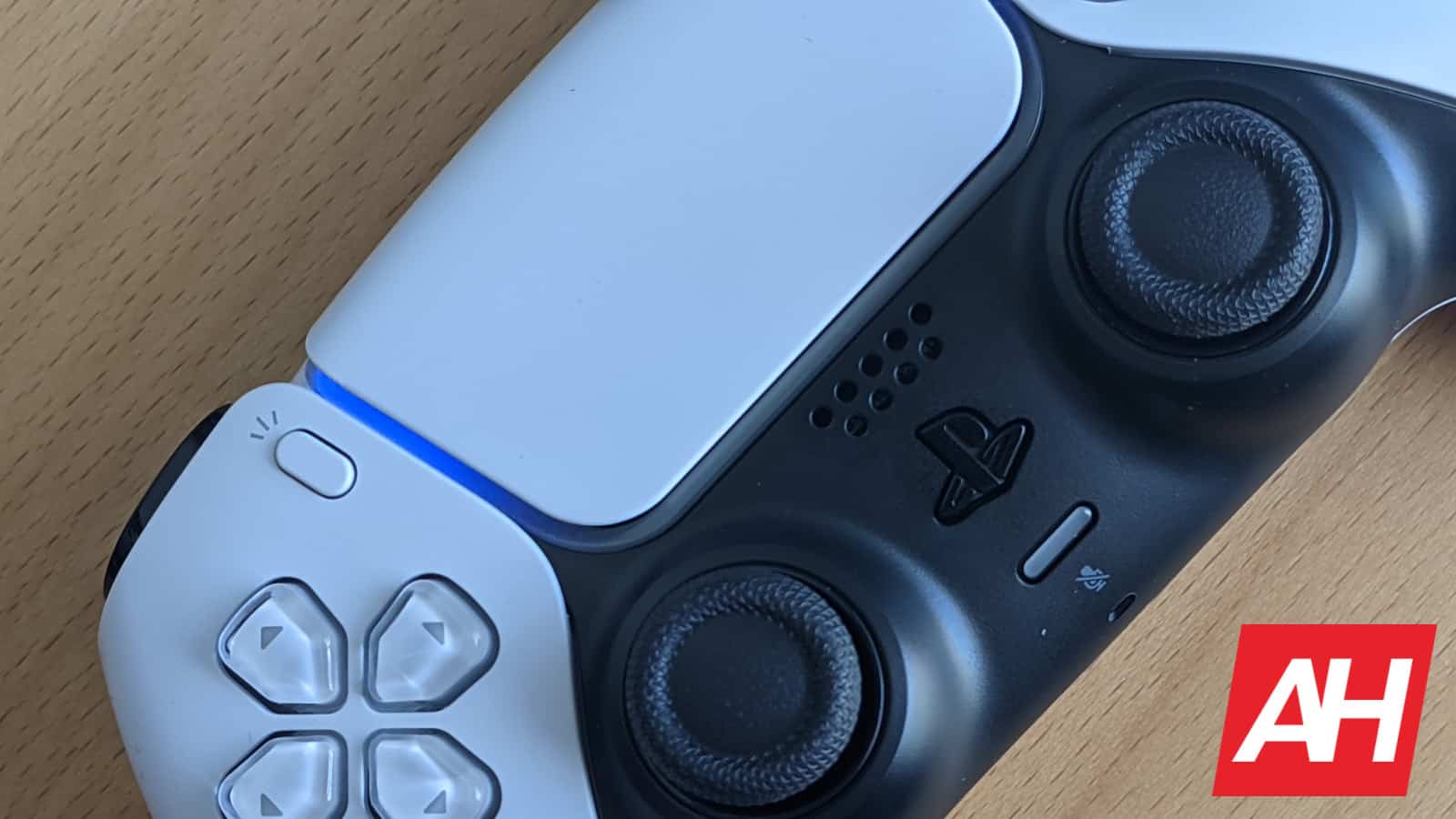
Sony made some honest to god advancements to the game controller when it released the PlayStation DualSense alongside the PS5, and now it’s apparently looking to add some more innovation with the inclusion of a rewind feature.
The company has patented a new type of controller that comes with a rewind button. This would allow users to rewind gameplay with “user-triggered bookmarks.” The patent was discovered on Patentscope by Tech4Gamers (via TechRadarGaming). It appears to have been published as of October 31, 2024. The patent was applied for back in April of 2023. That might suggest that Sony is already working on this type of controller. Since the patent was applied for more than a year ago.
That does not, however, mean that Sony actually plans to release it. Sony could also just be securing the patent in case it ever wants to start developing a controller with such a feature.
Sony controller with a rewind feature would allow you to rewind gameplay
You can technically rewind a game now, although it depends on the game and it doesn’t really work like this feature that the patent is describing. However, any number of games will allow you to reset at a checkpoint after death. So in a sense, this would be a more advanced version of that perhaps.
The difference may lie in the ability to immediately hit the rewind button and go back to a very specific point of the player’s choosing. According to the patent, when the rewind button is pressed, it captures a series of frames and places them in sequential order. From there, users can pick out a frame and re-enter live gameplay from that point.
“The user is able to enter the rewind mode from the live gameplay using one or more controller inputs to view recent gameplay (e.g. rewinding, fast-forwarding, playing, etc.), and returning to live gameplay afterward,” the patent says.
The button could also allow for fast-forwarding
In addition to the rewind feature, the new button would also allow players to fast-forward. This could potentially let players skip past a particularly difficult portion or area of the game. It’s also noted that the button would be in the same location as the current share button on the DualSense. So it seems this would take the place of the share button. However, the rewind button would incorporate the share button features, so nothing would presumably be lost here.
The patent also describes additional features like a Highlight Reel mode. It’s unclear if this controller will ever make it into consumer’s hands. But, if it did it would be a nifty feature that could enhance gameplay on PlayStation consoles even further.
Science & Environment
Affirm (AFRM) earnings report Q1 2025
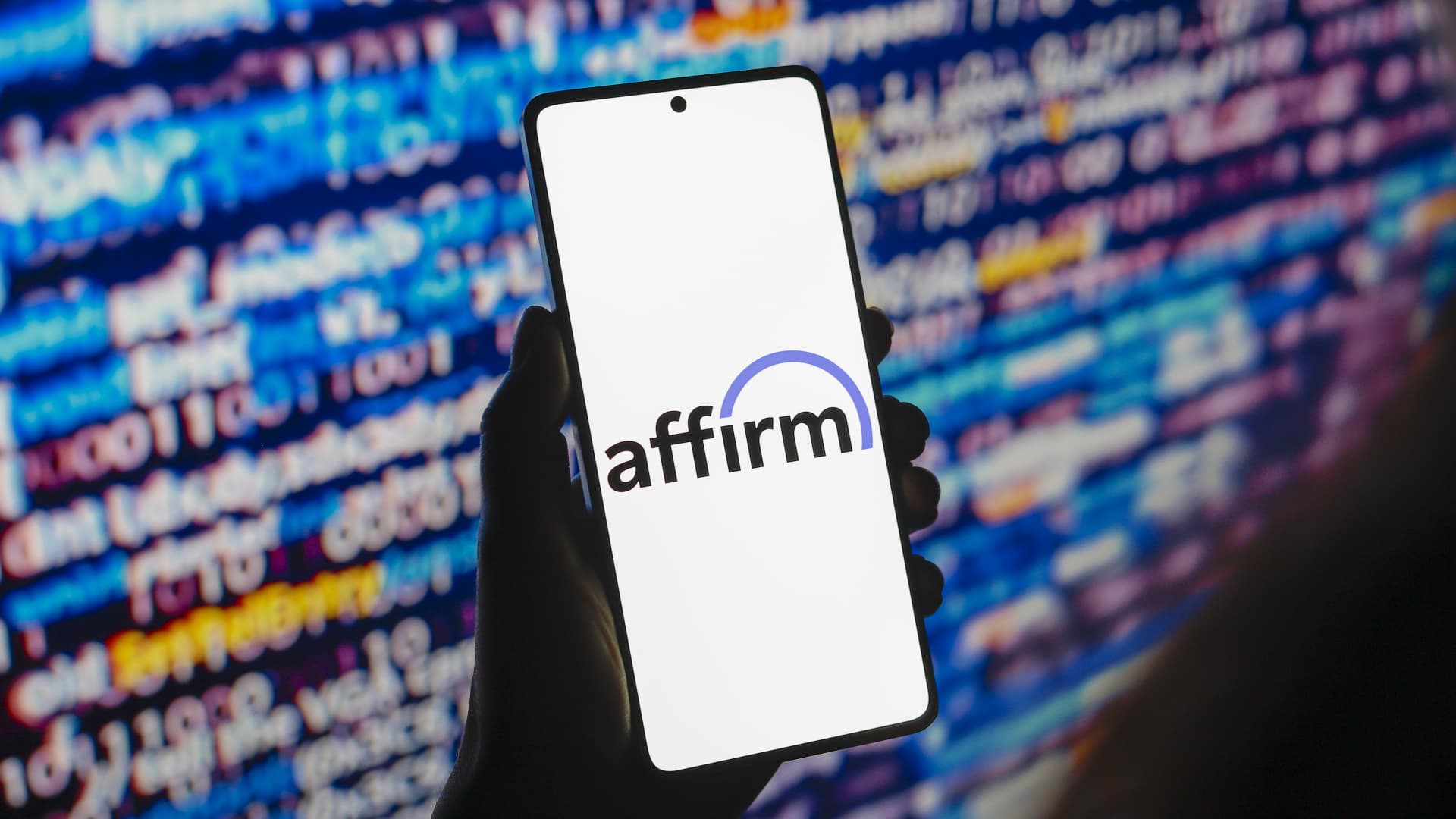

Affirm, the provider of buy now, pay later loans reported better-than-expected fiscal first-quarter results.
Here’s how the company did, compared to analysts’ consensus estimates from LSEG.
- Loss per share: 31 cents adjusted vs. a loss of 35 cents expected
- Revenue: $698 million vs. $664 million expected
Affirm reported gross merchandise volume (GMV) of $7.6 billion, topping the average estimate of $7.28 billion, according to StreetAccount. GMV, a key metric that helps gauge the total value of transactions, increased by 35% from a year earlier.
Revenue in the fiscal first quarter rose 41% from $496.5 million a year earlier.
Revenue less transaction costs (RLTC) came in at $285 million, ahead of earlier guidance of $265 million to $280 million.
Affirm said it expects to achieve profitability on a GAAP basis in its fiscal fourth quarter of 2025. Last quarter, CEO Max Levchin said in a note to shareholders that the company had set a new goal of hitting operating profitability on a GAAP basis by the end of its fiscal year.
The company sees second-quarter revenue of between $770 million and $810 million, or $790 million in the middle of the range, versus the average estimate of $785 million, according to LSEG. Affirm is guiding to GMV in the range of $9.35 billion to $9.75 billion. Analysts polled by StreetAccount called for GMV of $9.48 billion.
Affirm shares were about flat for the year as Thursday’s close, but have been trending higher lately, up more than 70% since the end of August.
The company’s new relationship with Apple plus other partnerships with Amazon and Shopify are helping results. In June, Affirm and Apple announced plans for U.S. Apple Pay users on iPhones and iPads to be able to apply for loans directly through Affirm.
“Affirm’s growth story has continued, particularly as they add new strategic distribution partners,” Kevin Kennedy, an analyst at global research firm Third Bridge, said in an email.
Kennedy added that the quality of Affirm’s underwriting, specifically for higher-priced orders and interest-bearing BNPL purchases, sets the company apart from the growing list of competitors.
“The payments space is constantly facing commoditization risk, and BNPL, while nascent, is facing the same challenge,” he wrote. “However, large ticket interest bearing purchases, which are becoming more accessible through Affirm, are better protected” compared with offerings from peers, he added.
Square parent Block, which also reported earnings after the bell, acquired BNPL firm Afterpay for $29 billion in 2021.
Affirm’s quarterly earnings call starts at 5:00 P.M. eastern.

Technology
Google’s November Pixel update is rolling out
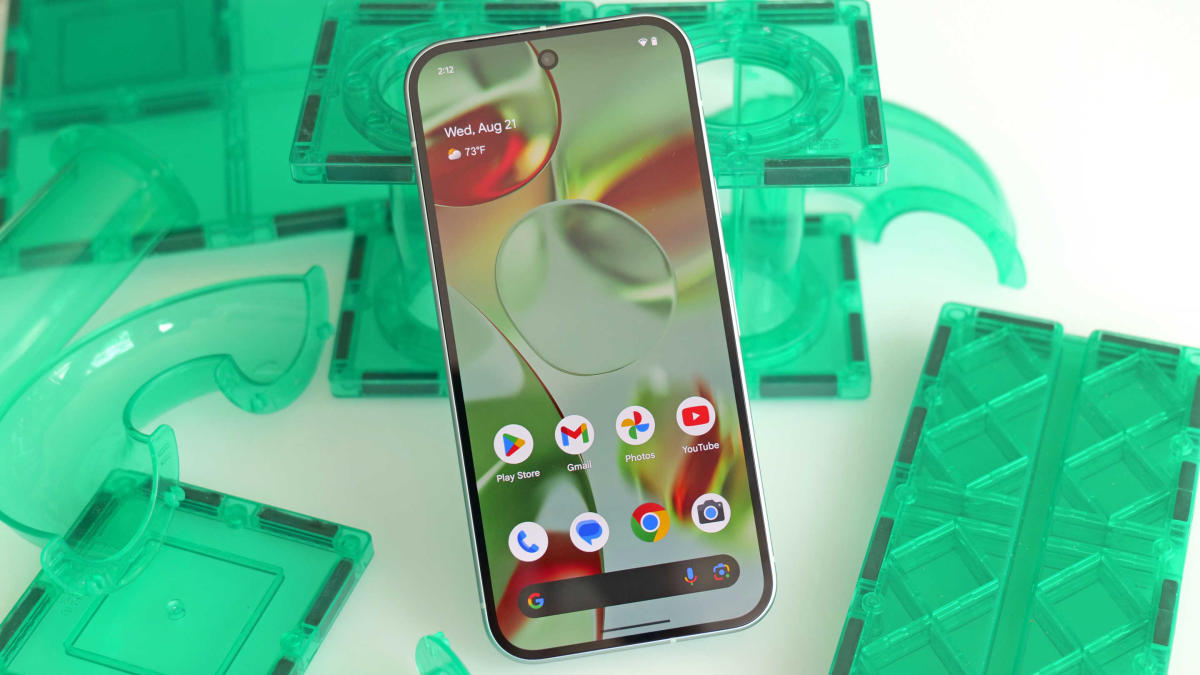
The November update for Google Pixel devices running Android 15 is rolling out now. This batch doesn’t include exciting new features, like the AI-powered theft protection in the October update, but it has bug fixes and the latest security patches to tighten things up.
The new software includes fixes for known intermittent issues with Bluetooth range, camera tilt when zooming between cameras and unexpected flashing or flickering of white dots or screen brightness. It also has fixes for adaptive brightness not activating, the keyboard dismiss button not working correctly and the performance and stability of some UI transitions and animations.
Android 15 arrived last month for Pixel devices, following the Pixel 9 lineup’s debut in August. The annual software jump focuses on security and privacy, like AI-powered theft detection lock and extra authentication requirements for removing SIMs and deactivating Find My Device.
Google says the November Pixel update is rolling out today and will continue in phases over the next week. You should see a notification when it’s ready for your device and carrier.
Science & Environment
Block (SQ) earnings Q3 2024
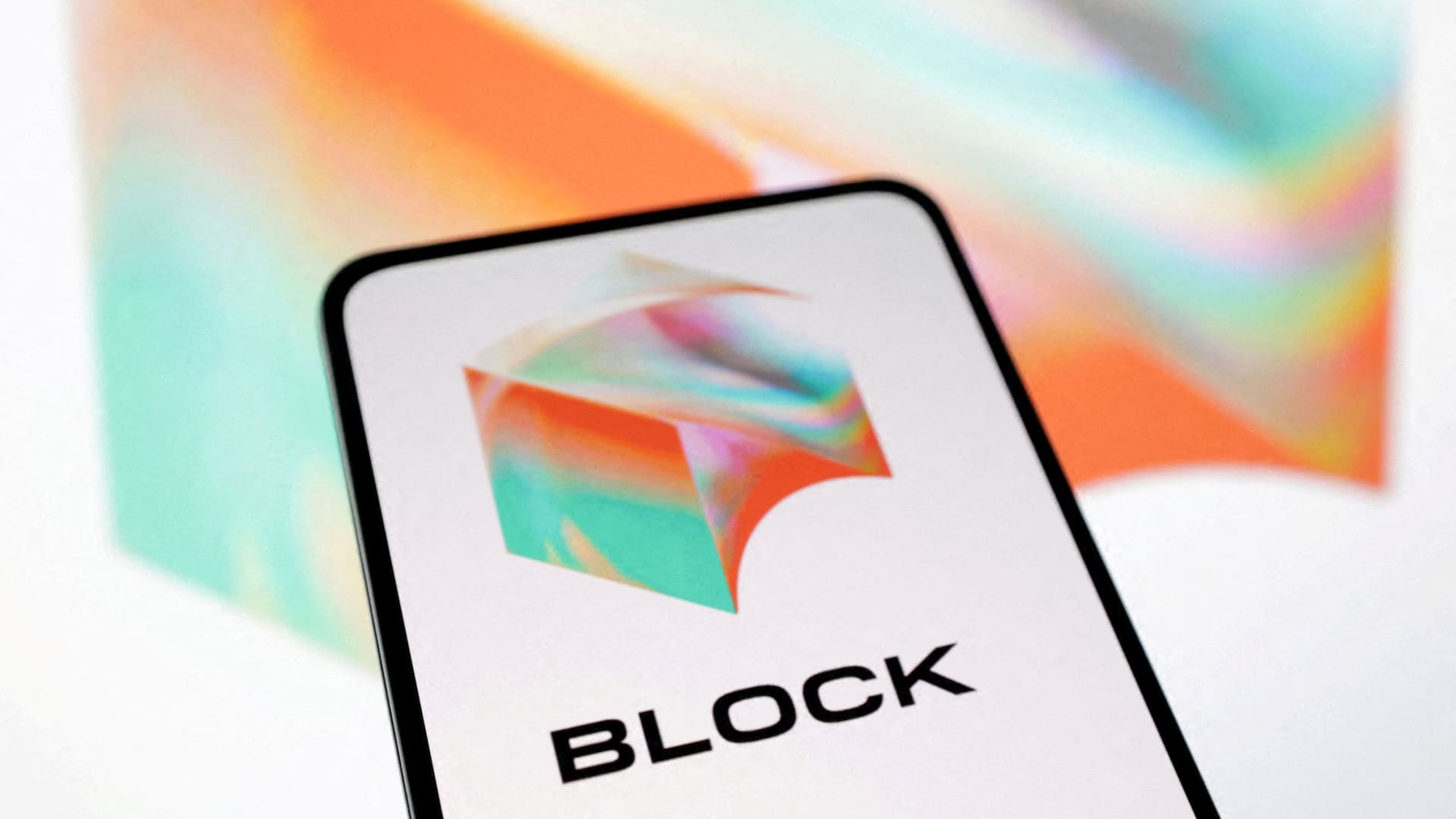
Block shares tumbled 11% in extended trading on Thursday after the company reported third-quarter revenue that trailed Wall Street expectations.
Here is how the company did, compared to analysts’ consensus estimates from LSEG.
- Earnings per share: 88 cents adjusted vs. 87 cents expected
- Revenue: $5.98 billion vs. $6.24 billion expected
Block, formerly known as Square, posted $2.25 billion in gross profit, up 19% from a year ago. Analysts tend to focus on gross profit as a more accurate measurement of the company’s core transactional businesses.
The company reported net income of $283.7 million, or 45 cents per share, after losing $88.7 million, or 15 cents a share, a year earlier.
The Cash App business, the company’s popular mobile payment platform and a significant contributor to overall profitability, reported $1.31 billion in gross profit, a 21% year-over-year jump. Block, run by Twitter co-founder Jack Dorsey, said its Cash App Card monthly active users increased 11% year over year to more than 24 million.
The company said gross profit for the fourth quarter will increase 14% to $2.31 billion.
Block’s third-quarter earnings call starts at 5 P.M. Eastern time.
-

 Science & Environment2 months ago
Science & Environment2 months agoHow to unsnarl a tangle of threads, according to physics
-

 Technology1 month ago
Technology1 month agoIs sharing your smartphone PIN part of a healthy relationship?
-

 Science & Environment2 months ago
Science & Environment2 months agoHyperelastic gel is one of the stretchiest materials known to science
-

 Science & Environment2 months ago
Science & Environment2 months ago‘Running of the bulls’ festival crowds move like charged particles
-

 Technology2 months ago
Technology2 months agoWould-be reality TV contestants ‘not looking real’
-

 Science & Environment1 month ago
Science & Environment1 month agoX-rays reveal half-billion-year-old insect ancestor
-

 Sport1 month ago
Sport1 month agoAaron Ramsdale: Southampton goalkeeper left Arsenal for more game time
-

 Money1 month ago
Money1 month agoWetherspoons issues update on closures – see the full list of five still at risk and 26 gone for good
-

 Science & Environment2 months ago
Science & Environment2 months agoPhysicists have worked out how to melt any material
-

 Science & Environment2 months ago
Science & Environment2 months agoMaxwell’s demon charges quantum batteries inside of a quantum computer
-

 MMA1 month ago
MMA1 month ago‘Dirt decision’: Conor McGregor, pros react to Jose Aldo’s razor-thin loss at UFC 307
-

 Science & Environment2 months ago
Science & Environment2 months agoSunlight-trapping device can generate temperatures over 1000°C
-

 Football1 month ago
Football1 month agoRangers & Celtic ready for first SWPL derby showdown
-

 News1 month ago
News1 month agoWoman who died of cancer ‘was misdiagnosed on phone call with GP’
-

 Science & Environment2 months ago
Science & Environment2 months agoLaser helps turn an electron into a coil of mass and charge
-

 Technology1 month ago
Technology1 month agoUkraine is using AI to manage the removal of Russian landmines
-
Business1 month ago
how UniCredit built its Commerzbank stake
-

 Technology1 month ago
Technology1 month agoGmail gets redesigned summary cards with more data & features
-

 News1 month ago
News1 month ago‘Blacks for Trump’ and Pennsylvania progressives play for undecided voters
-

 Science & Environment2 months ago
Science & Environment2 months agoLiquid crystals could improve quantum communication devices
-

 Science & Environment2 months ago
Science & Environment2 months agoA new kind of experiment at the Large Hadron Collider could unravel quantum reality
-

 Technology1 month ago
Technology1 month agoSamsung Passkeys will work with Samsung’s smart home devices
-

 Sport1 month ago
Sport1 month agoBoxing: World champion Nick Ball set for Liverpool homecoming against Ronny Rios
-

 Technology1 month ago
Technology1 month agoEpic Games CEO Tim Sweeney renews blast at ‘gatekeeper’ platform owners
-

 Science & Environment2 months ago
Science & Environment2 months agoWhy this is a golden age for life to thrive across the universe
-

 Technology1 month ago
Technology1 month agoRussia is building ground-based kamikaze robots out of old hoverboards
-

 Science & Environment2 months ago
Science & Environment2 months agoQuantum ‘supersolid’ matter stirred using magnets
-

 MMA1 month ago
MMA1 month agoDana White’s Contender Series 74 recap, analysis, winner grades
-

 News1 month ago
News1 month agoNavigating the News Void: Opportunities for Revitalization
-

 Sport1 month ago
Sport1 month ago2024 ICC Women’s T20 World Cup: Pakistan beat Sri Lanka
-

 News1 month ago
News1 month agoMassive blasts in Beirut after renewed Israeli air strikes
-

 Entertainment1 month ago
Entertainment1 month agoBruce Springsteen endorses Harris, calls Trump “most dangerous candidate for president in my lifetime”
-

 Technology1 month ago
Technology1 month agoMicrosoft just dropped Drasi, and it could change how we handle big data
-

 MMA1 month ago
MMA1 month agoPereira vs. Rountree prediction: Champ chases legend status
-

 MMA1 month ago
MMA1 month ago‘Uncrowned queen’ Kayla Harrison tastes blood, wants UFC title run
-

 Technology1 month ago
Technology1 month agoMicrophone made of atom-thick graphene could be used in smartphones
-

 Technology1 month ago
Technology1 month agoCheck, Remote, and Gusto discuss the future of work at Disrupt 2024
-

 News1 month ago
News1 month agoRwanda restricts funeral sizes following outbreak
-

 Sport1 month ago
Sport1 month agoWXV1: Canada 21-8 Ireland – Hosts make it two wins from two
-
Business1 month ago
Top shale boss says US ‘unusually vulnerable’ to Middle East oil shock
-

 TV1 month ago
TV1 month agoসারাদেশে দিনব্যাপী বৃষ্টির পূর্বাভাস; সমুদ্রবন্দরে ৩ নম্বর সংকেত | Weather Today | Jamuna TV
-

 Business1 month ago
Business1 month agoWater companies ‘failing to address customers’ concerns’
-

 Technology1 month ago
Technology1 month agoSingleStore’s BryteFlow acquisition targets data integration
-

 Technology1 month ago
Technology1 month agoWhy Machines Learn: A clever primer makes sense of what makes AI possible
-

 Science & Environment2 months ago
Science & Environment2 months agoQuantum forces used to automatically assemble tiny device
-

 News2 months ago
News2 months ago▶️ Hamas in the West Bank: Rising Support and Deadly Attacks You Might Not Know About
-

 News1 month ago
News1 month agoCornell is about to deport a student over Palestine activism
-

 Business1 month ago
Business1 month agoWhen to tip and when not to tip
-

 MMA1 month ago
MMA1 month agoKayla Harrison gets involved in nasty war of words with Julianna Pena and Ketlen Vieira
-

 News1 month ago
News1 month agoHull KR 10-8 Warrington Wolves – Robins reach first Super League Grand Final
-

 Science & Environment2 months ago
Science & Environment2 months agoITER: Is the world’s biggest fusion experiment dead after new delay to 2035?
-

 Technology2 months ago
Technology2 months agoMeta has a major opportunity to win the AI hardware race
-

 Science & Environment2 months ago
Science & Environment2 months agoA slight curve helps rocks make the biggest splash
-

 Science & Environment2 months ago
Science & Environment2 months agoNuclear fusion experiment overcomes two key operating hurdles
-

 Football1 month ago
Football1 month ago'Rangers outclassed and outplayed as Hearts stop rot'
-

 MMA1 month ago
MMA1 month agoPennington vs. Peña pick: Can ex-champ recapture title?
-

 Technology1 month ago
Technology1 month agoLG C4 OLED smart TVs hit record-low prices ahead of Prime Day
-
Travel1 month ago
World of Hyatt welcomes iconic lifestyle brand in latest partnership
-

 News1 month ago
News1 month ago▶ Hamas Spent $1B on Tunnels Instead of Investing in a Future for Gaza’s People
-

 Sport1 month ago
Sport1 month agoShanghai Masters: Jannik Sinner and Carlos Alcaraz win openers
-

 Sport1 month ago
Sport1 month agoChina Open: Carlos Alcaraz recovers to beat Jannik Sinner in dramatic final
-

 Football1 month ago
Football1 month agoWhy does Prince William support Aston Villa?
-

 Sport1 month ago
Sport1 month agoPremiership Women’s Rugby: Exeter Chiefs boss unhappy with WXV clash
-

 Money1 month ago
Money1 month agoTiny clue on edge of £1 coin that makes it worth 2500 times its face value – do you have one lurking in your change?
-

 Technology1 month ago
Technology1 month agoUniversity examiners fail to spot ChatGPT answers in real-world test
-

 Womens Workouts2 months ago
Womens Workouts2 months ago3 Day Full Body Women’s Dumbbell Only Workout
-

 Technology1 month ago
Technology1 month agoMusk faces SEC questions over X takeover
-

 Sport1 month ago
Sport1 month agoSturm Graz: How Austrians ended Red Bull’s title dominance
-

 Sport1 month ago
Sport1 month agoCoco Gauff stages superb comeback to reach China Open final
-
Business1 month ago
Bank of England warns of ‘future stress’ from hedge fund bets against US Treasuries
-

 MMA1 month ago
MMA1 month ago‘I was fighting on automatic pilot’ at UFC 306
-

 Science & Environment2 months ago
Science & Environment2 months agoNerve fibres in the brain could generate quantum entanglement
-

 Science & Environment2 months ago
Science & Environment2 months agoTime travel sci-fi novel is a rip-roaringly good thought experiment
-

 TV1 month ago
TV1 month agoTV Patrol Express September 26, 2024
-
Business1 month ago
Italy seeks to raise more windfall taxes from companies
-

 News1 month ago
News1 month agoGerman Car Company Declares Bankruptcy – 200 Employees Lose Their Jobs
-

 Sport1 month ago
Sport1 month agoURC: Munster 23-0 Ospreys – hosts enjoy second win of season
-

 Sport1 month ago
Sport1 month agoWales fall to second loss of WXV against Italy
-

 MMA1 month ago
MMA1 month agoHow to watch Salt Lake City title fights, lineup, odds, more
-
Business1 month ago
DoJ accuses Donald Trump of ‘private criminal effort’ to overturn 2020 election
-
Business1 month ago
Sterling slides after Bailey says BoE could be ‘a bit more aggressive’ on rates
-

 Technology1 month ago
Technology1 month agoQuoroom acquires Investory to scale up its capital-raising platform for startups
-
Business1 month ago
‘Let’s be more normal’ — and rival Tory strategies
-

 Sport1 month ago
Sport1 month agoNew Zealand v England in WXV: Black Ferns not ‘invincible’ before game
-

 News2 months ago
News2 months ago▶️ Media Bias: How They Spin Attack on Hezbollah and Ignore the Reality
-

 Science & Environment2 months ago
Science & Environment2 months agoHow to wrap your mind around the real multiverse
-

 Technology1 month ago
Technology1 month agoJ.B. Hunt and UP.Labs launch venture lab to build logistics startups
-

 Technology1 month ago
Technology1 month agoAmazon’s Ring just doubled the price of its alarm monitoring service for grandfathered customers
-
Business1 month ago
The search for Japan’s ‘lost’ art
-

 MMA1 month ago
MMA1 month agoKetlen Vieira vs. Kayla Harrison pick, start time, odds: UFC 307
-

 Technology1 month ago
Technology1 month agoThe best shows on Max (formerly HBO Max) right now
-

 Technology1 month ago
Technology1 month agoIf you’ve ever considered smart glasses, this Amazon deal is for you
-

 MMA1 month ago
MMA1 month agoKevin Holland suffers injury vs. Roman Dolidze
-

 Football1 month ago
Football1 month agoFifa to investigate alleged rule breaches by Israel Football Association
-

 News1 month ago
News1 month agoTrump returns to Pennsylvania for rally at site of assassination attempt
-

 Sport1 month ago
Sport1 month agoMan City ask for Premier League season to be DELAYED as Pep Guardiola escalates fixture pile-up row
-

 Technology4 weeks ago
Technology4 weeks agoNintendo’s latest hardware is not the Switch 2
-

 Technology4 weeks ago
Technology4 weeks agoThe FBI secretly created an Ethereum token to investigate crypto fraud
-

 MMA1 month ago
MMA1 month agoUFC 307’s Ketlen Vieira says Kayla Harrison ‘has not proven herself’
-

 News1 month ago
News1 month agoHarry vs Sun publisher: ‘Two obdurate but well-resourced armies’

You must be logged in to post a comment Login